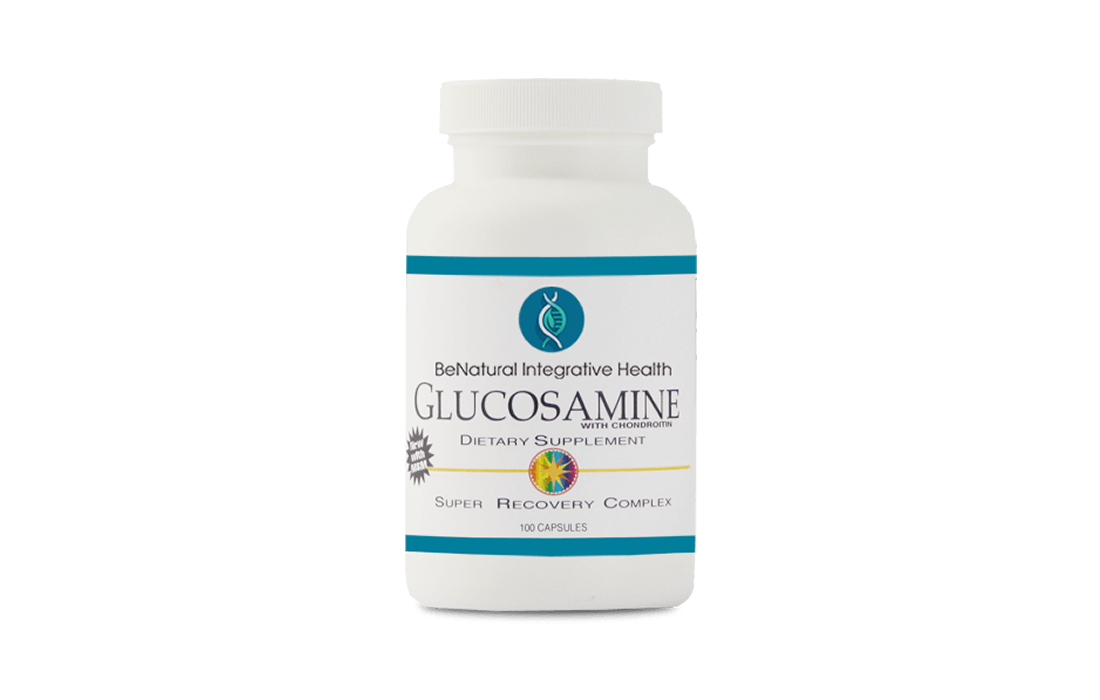Nutrition and Supplements
Glucosamine Supplementation and Joint Pain
What is Glucosamine?
Glucosamine is a natural compound found in cartilage, the tough tissue that cushions joints. In supplement form, glucosamine is harvested from shells of shellfish or made in a lab. There are several forms of glucosamine, including glucosamine sulfate, glucosamine hydrochloride, and N-acetyl glucosamine.
It serves as a building block for various functional molecules in our body but is primarily recognized for developing and maintaining cartilage within our joints. Glucosamine is also found in some animal and other non-human tissues, including shellfish shells, animal bones, and fungi. Supplemental forms of glucosamine are often made from these natural sources.
Supplementation with glucosamine has been shown to improve joint health and is linked to reduced mortality rates. Most often used to treat bone and joint disorders symptoms, it’s likewise used to target several other inflammatory diseases.
Glucosamine is needed to synthesize glycosaminoglycans (GAGs), which are the proteins that bind water in the cartilage matrix. It is a major precursor to the GAGs, which then form the tissue framework that binds collagen. Together, both collagen and GAGs continuously construct and reconstruct cartilage.
Does it help with osteoarthritis joint pain?
Arthritis is a significant cause of limitation in daily functional activities in the general population. It is one of the leading causes of disability today and is a major cause of reduced functional mobility, particularly in older people.
Osteoarthritis (OA) manifests by degeneration of the joints in the body, and it is referred to as “wear and tear” arthritis. Generally, articular cartilage damage is a precursor of osteoarthritis, and individuals who suffer from severe cartilage injury progress to this degenerative condition. Factors such as aging, obesity, and physical injury all contribute to the degeneration of joint cartilage.
Commonly, analgesics and anti-inflammatory agents are used in the management of OA. Studies have also indicated that glucosamine, an amino sugar produced by the body, can relieve arthritic pain-related symptoms.
A study published in the British Journal of Sports Medicine in which 46 individuals were divided into two groups, a placebo group and one supplemented with glucosamine for 12 weeks at a dose of 2,000 mg per day.
During this period, testing sessions were conducted, with changes in knee pain and functions assessed by clinical and functional tests. Also, two questionnaires were used. The researchers found that both clinical and functional test scores improved with time. On self-report evaluations, 88% (21) patients from the glucosamine group reported some degree of improvement in their knee pain compared to 17% (3) in the placebo group. The researchers’ results suggest that glucosamine supplementation can provide some degree of pain relief and improved function in persons who experience chronic joint pain, knee pain.
Other studies have shown that oral use of glucosamine sulfate might provide some pain relief for people with osteoarthritis and that it may also help slow knee joint degeneration associated with osteoarthritis. Also, studies have found that glucosamine hydrochloride may help reduce pain in rheumatoid arthritis patients.
Some studies have also shown a reduction in inflammation markers. A study in over 200 people linked glucosamine supplements to a 28% and 24% reduction in 2 specific biochemical markers of inflammation, CRP and PGE. And a 36% reduction in the same markers was noted with chondroitin supplementation, which is commonly added to glucosamine supplements.
How Much Should I take?
In most studies on treating osteoarthritis, the typical dose was 500 milligrams of glucosamine sulfate, three times a day. Ask your doctor what they recommend for you. Some experts suggest you take it with meals to prevent an upset stomach.
Conclusions
Although larger scale studies need to be done to know more about the mechanisms behind the benefit of glucosamine supplementation, the supplement appears to be safe. It may be a valuable option for people who can’t take nonsteroidal anti-inflammatory drugs (NSAIDs).
Currently, the strongest evidence supports glucosamine sulfate use for long-term treatment of osteoarthritis symptoms. If you’re considering using glucosamine, keep in mind the quality of the supplement you choose — as this could make a difference in how it affects you. At Zignagenix we offer a glucosamine formulation created for athletes and active lifestyle enthusiasts with the highest quality standards. You can ask one of our team members about our products.
Sources:
Braham R, Dawson B, Goodman C. The effect of glucosamine supplementation on people experiencing regular knee pain. Br J Sports Med. 2003 Feb;37(1):45-9; discussion 49. doi: 10.1136/bjsm.37.1.45. PMID: 12547742; PMCID: PMC1724589.
https://www.mayoclinic.org/drugs-supplements-glucosamine/art-20362874
https://www.healthline.com/nutrition/glucosamine

